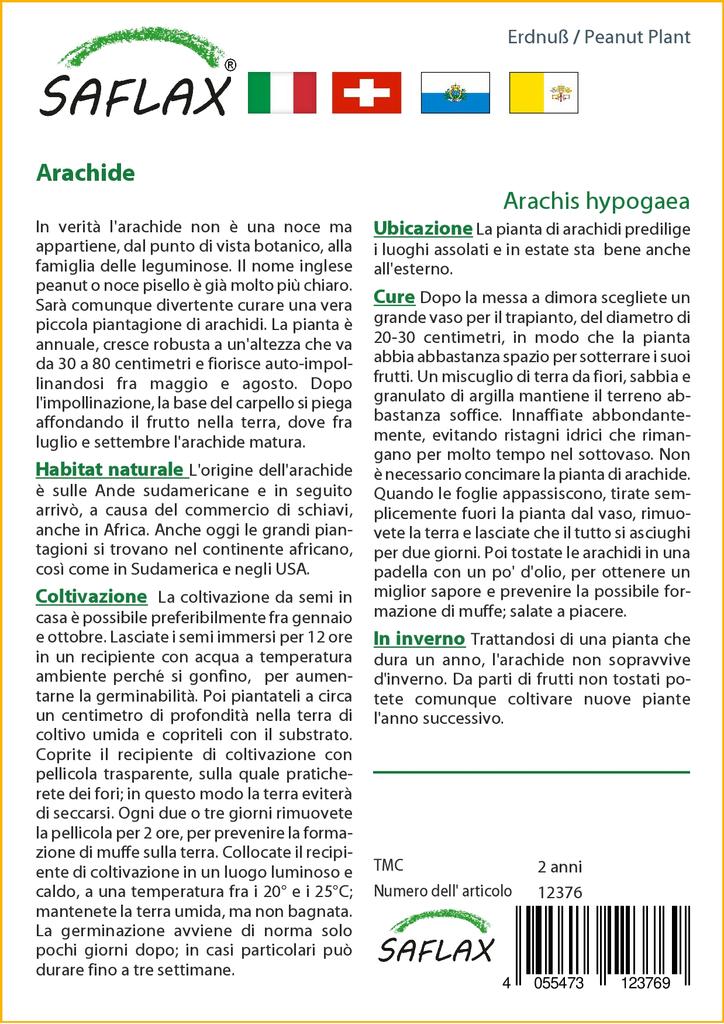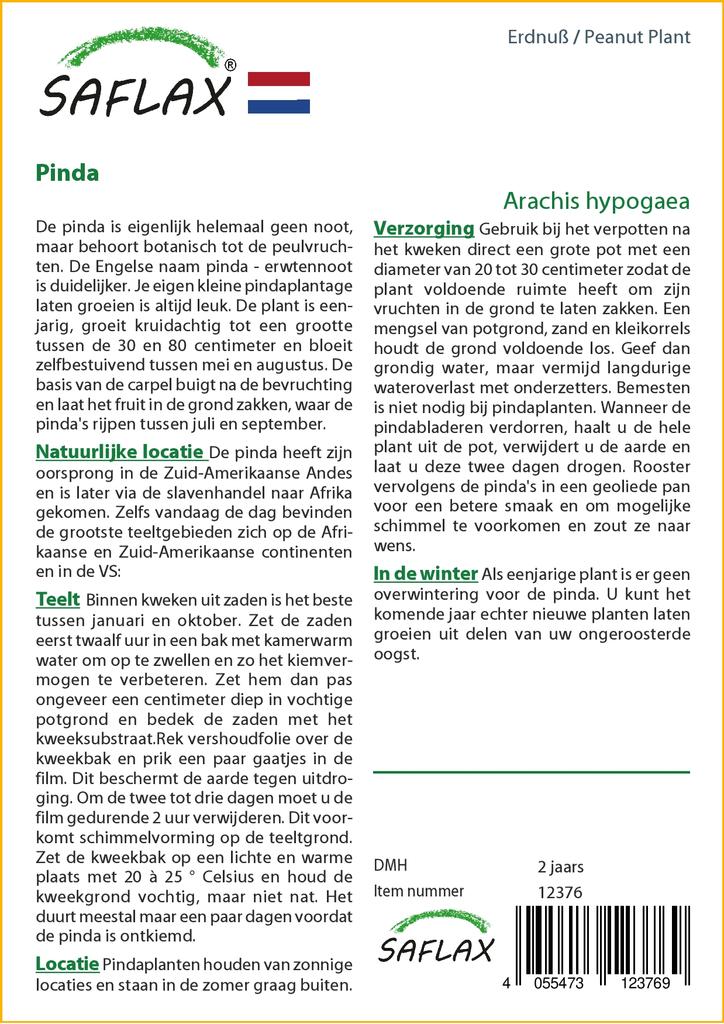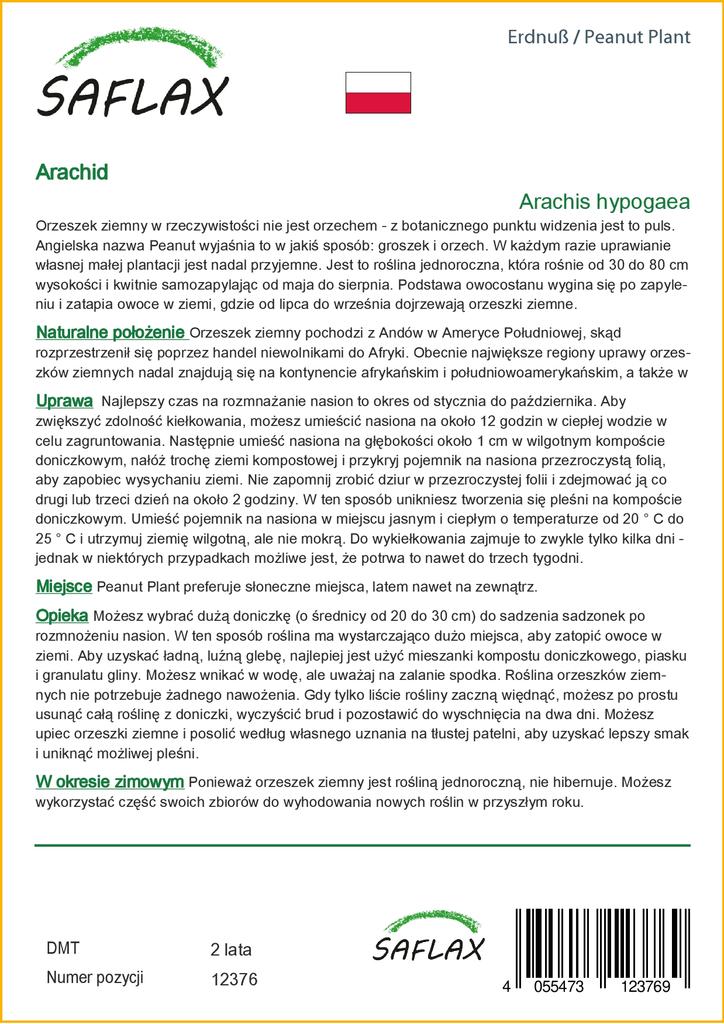Worth knowing:
The Peanut is actually not a nut - botanically speaking it is a pulse. The English name Peanut makes that somehow clear: pea and nut. Anyway, it is still rather fun to cultivate your own small plantation. It is an annual plant that grows herbaceous about 30 to 80 cm tall and flowers self-pollinating between May and August. The base of the carpel bends after pollination and sinks the fruit into the earth, where between July and September the peanuts mature.
Natural Location:
The Peanut has its origin in the Andes Mountains of South America, from where it spread through the slave trade to Africa. Today the biggest Peanut growing regions are still on the African and South American continent as well as in the USA.
Cultivation:
The best time for seed propagation is between January and October. To increase the germinability, you can place the seeds for about 12 hours in warm water for priming. Then, plant the seeds about 1 cm deep in moist potting compost, put some compost earth on top, and cover the seed container with clear film to prevent the earth from drying out. Don’t forget to make some holes in the clear film and take it every second or third day completely off for about 2 hours. That way you avoid mold formation on your potting compost. Place the seed container somewhere bright and warm with a temperature between 20°C and 25°C and keep the earth moist, but not wet. Until germination it usually takes only a few days - however in some cases it is possible that it will take up to three weeks.
Place:
The Peanut Plant prefers sunny places, during the summer even outdoors.
Care:
You might want to choose a big pot (between 20 and 30 cm in diameter) for planting the seedlings after seed propagation. That way the plant has enough space to sink its fruits into the earth. To have a nice loose soil, it is best to use a mix of potting compost, sand and clay granulate. You can water penetratingly, but be aware of waterlogging in the saucer. The Peanut Plant doesn’t need any fertilizing. As soon as the leaves of your plant start withering, you can just remove the whole plant from the pot, clean off the dirt and let it dry for two days. You may roast your Peanuts and add salt to your liking in an oily frying pan, to get a better taste and to avoid a possible mold fungus.
During the winter:
Since the Peanut is an annual plant it doesn’t hibernate. You may use parts of your harvest to grow new plants next year.
Picture credits:
- © © 1. H.Zell 2. Franz Eugen Köhler - CC-BY-SA-3.0 - http://creativecommons.org/licenses/by-sa/3.0
- © Frank Laue - © Saflax - http://www.saflax.de/copyright
- © Frank Laue - © Saflax - http://www.saflax.de/copyright
- © H. Zell - CC-BY-SA-3.0 - http://creativecommons.org/licenses/by-sa/3.0
- © H. Zell - CC-BY-SA-3.0 - http://creativecommons.org/licenses/by-sa/3.0
- © Pollinator - CC-BY-SA-3.0 - http://creativecommons.org/licenses/by-sa/3.0
- © Sugeesh - CC-BY-SA-3.0 - http://creativecommons.org/licenses/by-sa/3.0
- © H.Zell - CC-BY-SA-3.0 - http://creativecommons.org/licenses/by-sa/3.0
- © Franz Eugen Köhler - Public domain - http://creativecommons.org/licenses/publicdomain/ - . -
- © - -











































